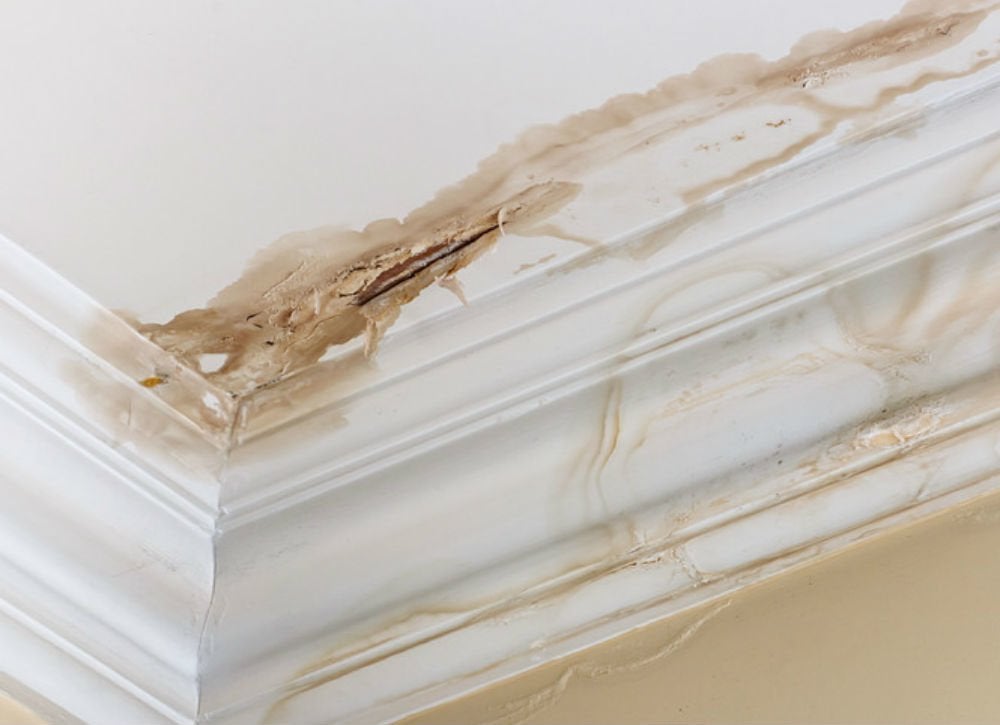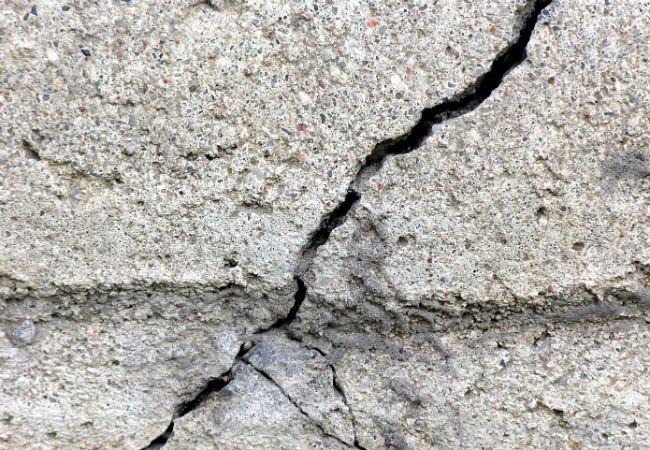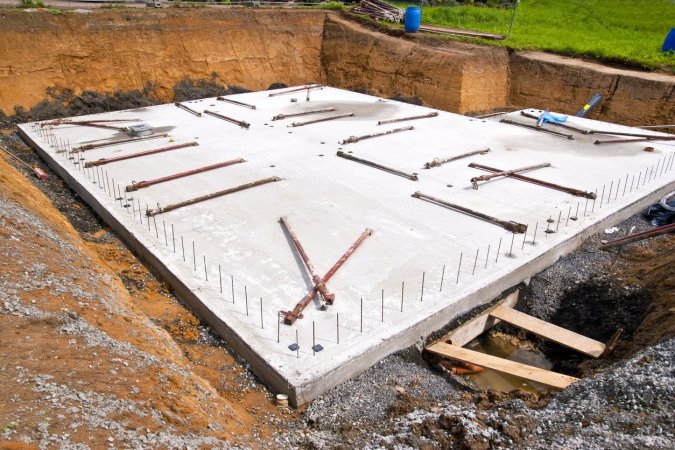We may earn revenue from the products available on this page and participate in affiliate programs. Learn More ›
Concrete Cracks

A small crack in any type of concrete can quickly become a large crevice that could lead to a potentially hazardous situation, especially in winter. If water seeps in, it could freeze and expand, widening the hole and possibly compromising the structural integrity of an entire section of concrete. Repair cracks with a quick-setting filler or mortar mix to prolong the life of your sidewalks, steps, or patios, and to prevent this tiny gap from growing into a huge repair bill.
Related: Cement Your Place in DIY History with These 9 Easy Concrete Projects
Clogged Gutters

Don’t neglect your gutters! If not properly maintained, these vital drainage conduits could cause trouble during the winter, leading to ice or water damage. If you notice your gutters and downspouts are overflowing with leaves or seem not to be draining properly, give them a good cleaning, confirm that they are firmly affixed to the house, and make sure the downspouts drain away from the foundation. While these steps may cost you an afternoon, a few hours’ work is a small price to pay when you consider the expensive consequences of putting it off.
Related: 9 Ways to Reduce Exterior Home Maintenance—for GOOD (Almost)!
Wobbly Railings

Wobbly railings along your porch,
deck, or steps are a sign that there’s a weak connection between one or more of the posts and the frame. The fix is easy; simply tighten screws or lag bolts in places that don’t feel sturdy. Whatever you do, though, don’t ignore them. Eventually the loose rail will give in, and you’ll be left with a broken section of the structure—and those repairs will be more costly and time-consuming to deal with than merely tuning up a few shaky sections.
Water Warnings

If you notice a
water spot on your ceiling, don’t ignore it. While it’s obvious you may have a leak somewhere, the cause is not always as obvious—you could be dealing with something much worse than a loose shingle or condensation. Consider enlisting a roofing contractor at the first sign of trouble to get a clear picture of exactly what’s going on instead of brushing it off or trying to decipher the problem yourself.
Driveway Damage

Asphalt is a porous surface, which is why it’s so important to seal your driveway as soon as you notice signs of wear to prevent damage from rain, snow, ice, sunlight, and oil drips. If water seeps through the permeable material and freezes, it strains the pavement and causes ever-widening cracks. This seepage may also saturate the soil underneath, which could cause a shift over time and result in more damage to the driveway.
Faulty Faucets

If you notice a leaky faucet or a running toilet, address it right away. Not only will giving your systems a quick checkup alert you to bigger issues at hand, fixing a leak of any size will save you money on your water bills. If you put the repair off, however, a small leak could get worse, doubling the size of the problem—and the eventual plumbing bill.
Foundation Faults

Houses “settle” over time, and in some cases, small cracks can appear in the foundation. If you find one or more cracks, don’t neglect them; fill them immediately while they are still small and on the surface, and before water and ice damage can occur and cause real structural problems. Quick-set mortar mix or cement makes an effective patching material, and most can be applied and smoothed with a hand trowel.
Small Screen Tears

Repair holes, tears, or punctures in door and window screens as soon as you spot them. The longer you wait, the more likely it will be that you’ll have to replace the entire screen sooner than necessary. Small holes can be sealed with clear nail polish or shellac, while slightly larger holes can be patched with either a kit or by simply cutting a piece of screen about an inch larger than the hole and gluing it in place.
Blocked Chimneys

A blocked chimney is not a problem you want to ignore. If you don’t properly maintain your
chimney, you run the risk of suffering from a fire, smoke inhalation, or carbon monoxide poisoning. Soot and creosote can build up on the interior of the chimney, and can be removed only by physically brushing and vacuuming the unit. Also inspect the chimney cap to make sure it’s not rusty or damaged; this will prevent debris and pests from entering your home. As a final precaution, make sure to change the batteries in your smoke and carbon monoxide detectors every six months, and check and replace fire extinguishers as needed.

















